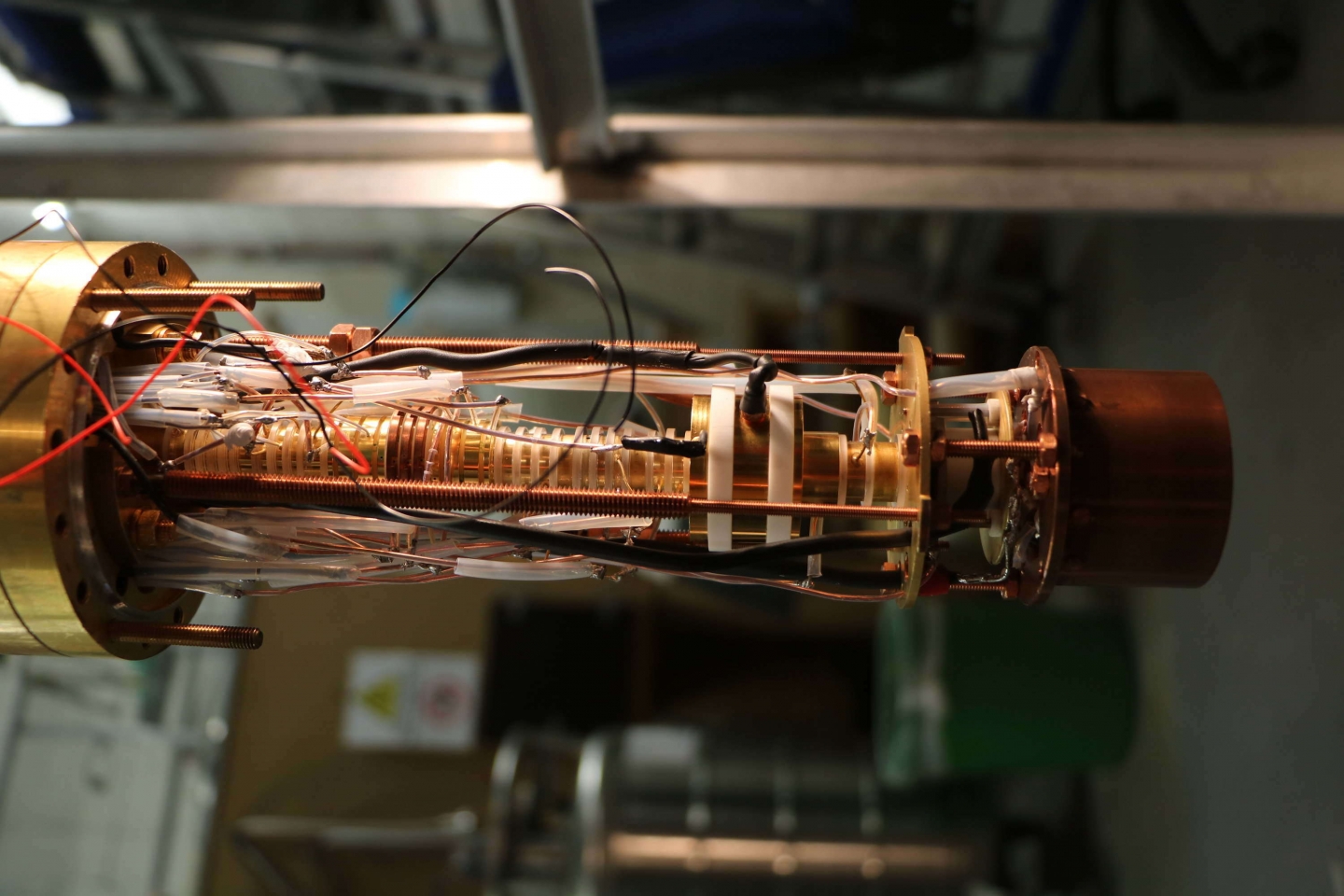A team in Germany has made the most precise measurement to date of the mass of a single proton, the particle that – together with the neutron and the electron – makes up all the ordinart matter in the universe, and therefore also us. They found that the proton is about 30 billionths of a percent lighter than previously thought. The result improves by a factor of three on the precision of the accepted value of the Committee on Data for Science and Technology (CODATA) – which regularly collects and publishes the recommended values of fundamental physical constants – and it also disagrees with its central value at a level of 3.3 standard deviations, which means that the new value is significantly different from the previous result.
Proton mass is a fundamental parameter in atomic and particle physics, influencing atomic spectra and allowing tests of ultra-precise calculations within Quantum Electrodynamics (QED), the theory that describes how light and matter interact. In particular, a detailed comparison between the masses of the proton and the antiproton offers a stringent test of a fundamental symmetry of the Standard Model, called charge, parity and time (CPT) invariance. This proton lightness could also potentially shed light on other mysteries, such as the well-known discrepancies in the measured mass of the heaviest hydrogen isotope, tritium.
The team at the Max Planck Institute for Nuclear Physics (MPIK) in Heidelberg and their collaborators from RIKEN in Japan used a device known as Penning trap, in which a combination of strong electric and magnetic fields, cooled to 4 degrees Kelvin (- 269.15 °C) is able to store individual protons and highly charged carbon ions. In this trap, the magnetic field forces the particles to move in circle and by measuring the characteristic frequencies of the trapped particles when they spin around, the mass of the proton follows directly.
The sensitive single-particle detectors were partly developed by the RIKEN group, drawing on experience gained with similar traps for antimatter research at CERN’s Antiproton Decelerator (AD). “The group around Sven Sturm and Klaus Blaum from MPIK Heidelberg that did the measurement has great expertise with carbon, whereas the BASE group contributed proton expertise based on 12 years dealing with protons and antiprotons,” explains RIKEN group leader and spokesperson of the AD’s BASE experiment, Stefan Ulmer. “We shared knowledge such as know-how on ultra-sensitive proton detectors and the ‘fast shuttling’ method developed by BASE to perform the proton/antiproton charge-to-mass ratio measurement.”
Although carefully conducted cross-check measurements confirmed a series of published values of the proton mass and showed that no unexpected systematic effects were imposed by the new method, such a striking departure from the accepted value will likely challenge other teams to revisit the proton mass. The discrepancy has already inspired the MPIK-RIKEN team to further improve the precision of their measurement, for instance by storing a third ion in the trap and measuring it simultaneously to eliminate uncertainties originating from magnetic field fluctuations, which are the main source of systematic errors when using the new technique.
“It is also planned to tune the magnetic field to even higher homogeneity, which will reduce additional sources of systematic error,” explains BASE member Andreas Mooser. “The methods that will be pioneered in the next step of this experiment will have immediate positive feedback to future BASE measurements, for example in improving the precision in the antiproton-to-proton charge-to-mass ratio.”
The research was published on 18 July 2017 in Physical Review Letters.

